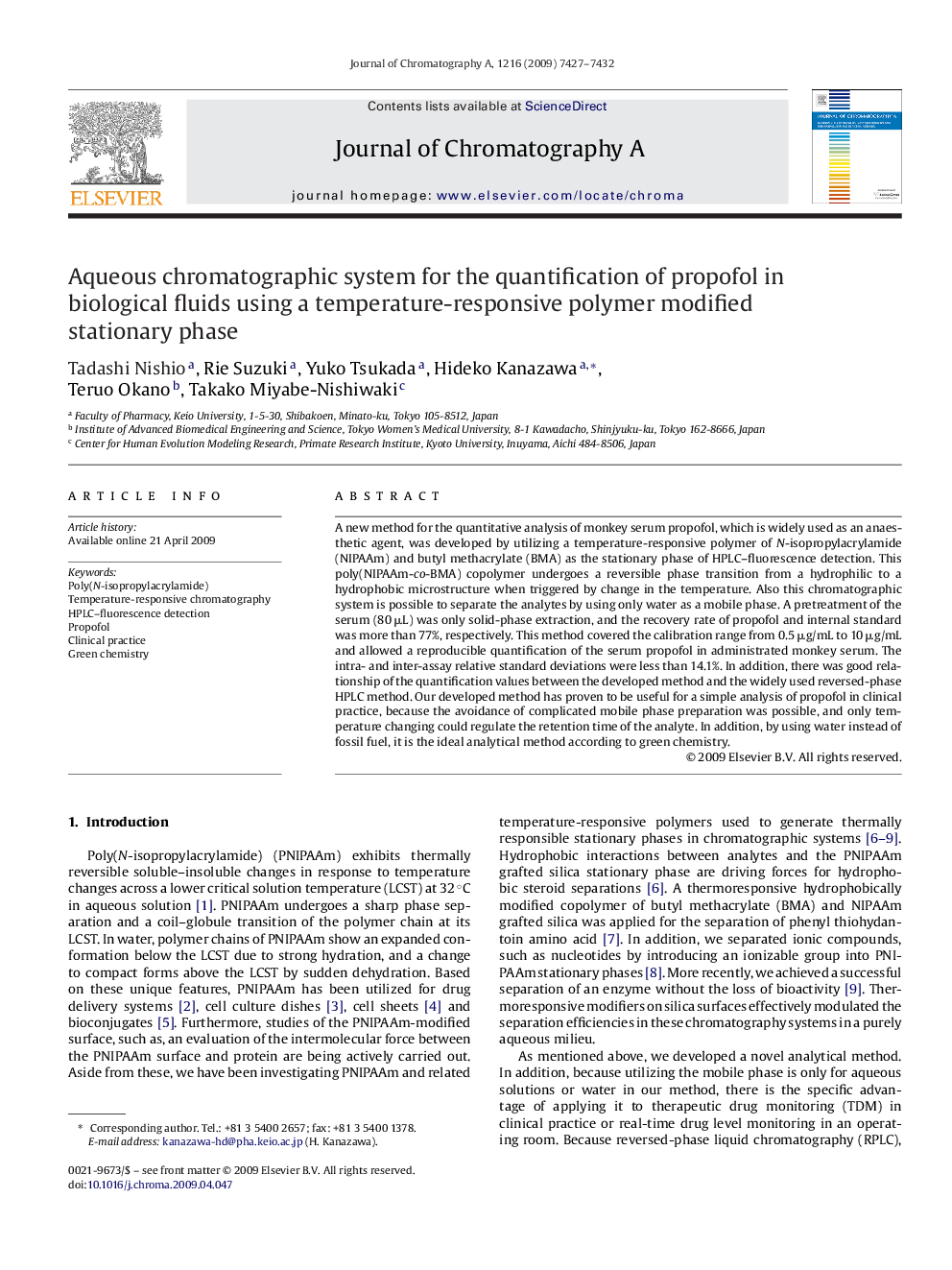| Article ID | Journal | Published Year | Pages | File Type |
|---|---|---|---|---|
| 1210618 | Journal of Chromatography A | 2009 | 6 Pages |
A new method for the quantitative analysis of monkey serum propofol, which is widely used as an anaesthetic agent, was developed by utilizing a temperature-responsive polymer of N-isopropylacrylamide (NIPAAm) and butyl methacrylate (BMA) as the stationary phase of HPLC–fluorescence detection. This poly(NIPAAm-co-BMA) copolymer undergoes a reversible phase transition from a hydrophilic to a hydrophobic microstructure when triggered by change in the temperature. Also this chromatographic system is possible to separate the analytes by using only water as a mobile phase. A pretreatment of the serum (80 μL) was only solid-phase extraction, and the recovery rate of propofol and internal standard was more than 77%, respectively. This method covered the calibration range from 0.5 μg/mL to 10 μg/mL and allowed a reproducible quantification of the serum propofol in administrated monkey serum. The intra- and inter-assay relative standard deviations were less than 14.1%. In addition, there was good relationship of the quantification values between the developed method and the widely used reversed-phase HPLC method. Our developed method has proven to be useful for a simple analysis of propofol in clinical practice, because the avoidance of complicated mobile phase preparation was possible, and only temperature changing could regulate the retention time of the analyte. In addition, by using water instead of fossil fuel, it is the ideal analytical method according to green chemistry.
